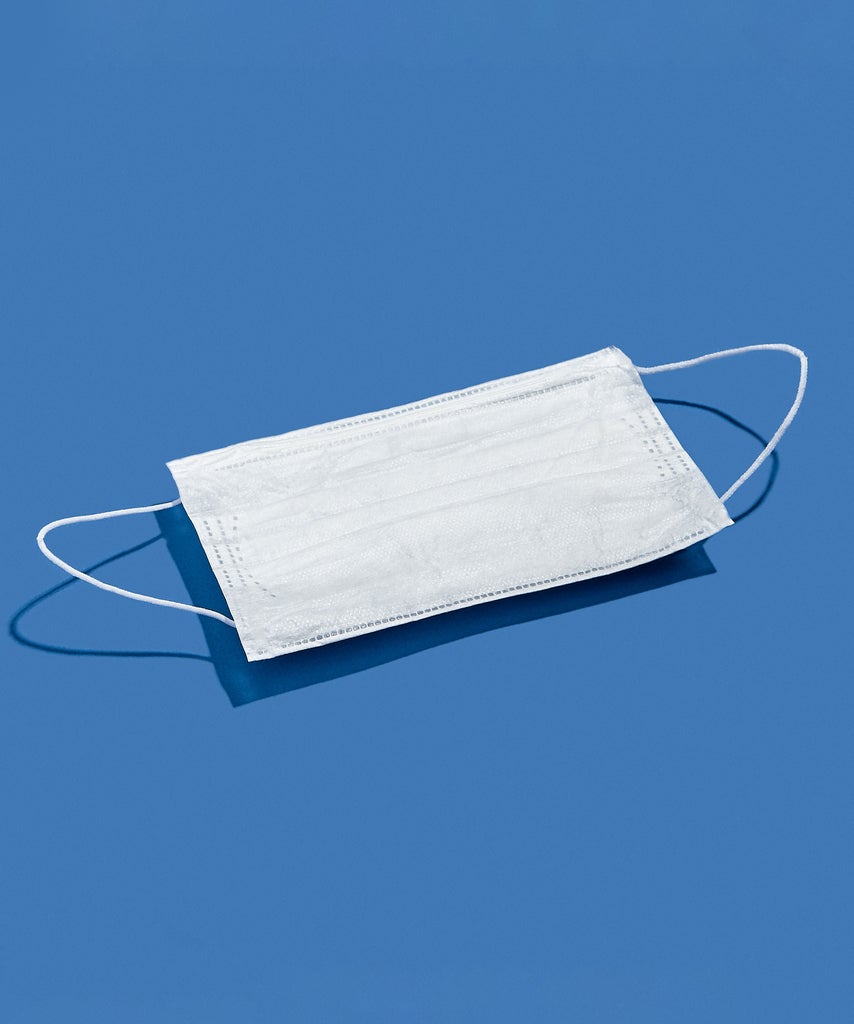
I’ve been writing about the novel coronavirus for months now. So much about the pandemic and the public reaction to it has surprised me. Most of all, the mask controversy. For a long time, I didn’t really “get” why people were refusing to wear face masks. After all, The Center For Disease Control and Prevention says they protect us from virus-spreading respiratory droplets. Donning one seemed like a public service and a no brainer to me. Until recently — and the sudden understanding of the “no mask” mentality came from a surprising source: a sexpert, who was comparing masks to condoms.
“If you want to know how we get people to comply with wearing face masks, ask a #sexologist — it’s not our first rodeo when it comes to convincing people they should wear a barrier for protection from a deadly virus,” wrote Jill McDevitt, PhD, a sexuality educator, in a Facebook post.
It wasn’t the first time I’d heard the mask/condom comparison. Just last week, Nate Favini, MD, told me: “Wearing your mask down around your chin is like having a condom and leaving it on the nightstand while you have sex.” In April, The New York Times posed the question: “Are face masks going to become like condoms — ubiquitous, sometimes fashionable, promoted with public service announcements? They should be.”
But something about McDevitt’s words finally made it click. I don’t know too many people who’ll admit that they’re refusing to wear a mask right now. But I do know hoards of people my age who’ll confide that they dislike condoms, and even avoid wearing them. When I was younger, a common joke among friends was that “Plan B is my Plan A.” Ha ha — but I always sensed that there some some truth to it. We laughed along when comedian Amy Schumer quipped, “You have to pretend like you want to use a condom.” We all knew better; but we still didn’t all wear them every time.
I wondered if people don’t wear masks for the same reasons they don’t wear condoms. At least one study found that “masculine ideology” was associated with “sexually risk behavior” like eschewing rubbers. According to the researchers, this ideology is associated with a few traits: status, anti-femininity, and toughness, as The Scientific American reports. The research on what makes people not wear masks is thinner, of course, but a Gallup Poll conducted in mid-April did find that more women wore masks more often than men.
When I reach out to McDevitt directly to ask more about her thoughts on the overlaps between condoms and face masks, she admits, “The condom analogy isn’t perfect, but my hope is that it can at least provide a framework for thinking about masks.” She also notes that we can use what we learned from four decades of condom research to help encourage people to don masks. She recommended the following steps, to start.
Lead by example
First and foremost: Wear your own mask. It may seem like a small step, but your actions have a bigger ripple effect than you might realize. McDevitt remembers being in a long line at her local post office towards the beginning of the pandemic. “Every single person was wearing a mask — [then] a man walked in without one,” she says. “After a few moments he said to the person who got in line behind him ‘can you hold my spot? I’m going to run out to the car to get a mask. I don’t want to be the only one without one.’ And that is how we normalize. The sign on the door of the post office saying MASKS REQUIRED didn’t make him do it. Wanting to fit in with the ‘norm’ is what made him do it.”
Same goes for condoms: The more wearing them is seen as the norm, the more people get on board.
Empathize, then educate
Guilting people into compliance does not work, McDevitt says. “As much as shaming people may feel satisfying to folks, if the end goal is wearing a mask, that tactic will fail,” she says. “People who aren’t complying may be ‘assholes,’ but telling them so won’t make them do what you want.”
A better route? Try to understand where they’re coming from, then gently point out the errors in their perspective. For instance, recently McDevitt encountered someone who said they couldn’t wear a mask because they have asthma, and they worried it would trigger their symptoms. “Empathy — ‘My goodness, I don’t know much about asthma but it must be scary feeling like you can’t breathe’ — and problem-solving — ‘Here are the links to where to get face shields to wear instead of a cloth mask’ — go a lot farther than, ‘If you don’t wear a mask, you’re dumb and you don’t care about killing people,’” McDevitt tells me.
The condom equivalent? “Oh, you’re allergic to latex? Have you tried the lambskin or polyurethane versions?”
Positive reinforcement
Give people plenty of reasons to keep wearing their masks. McDevitt says she makes a point to pay compliments to people on their masks when she goes out. She might point out the fun pattern or the pretty color. You can also just thank a person for helping to protect others from respiratory droplets. (“Thank you for having a condom,” is always a welcome compliment too.)
Accessibility
Keep extra masks on you to hand out to others in case they forgot. Don’t shame someone for forgetting; just say, “Oh here, I have an extra!” and pass it off. They may be genuinely glad you have their back. Just like your partner would be if you happened to have an extra condom or dental dam on you on the one day they ran out.
Coronavirus Might Cause A Global Condom Shortage
It's Hot. But You Still Need To Wear A Face Mask
Here's Where To Shop Fashion-Forward Face Masks
from refinery29
Condoms Can Teach Us A Lot About Face Masks
![Condoms Can Teach Us A Lot About Face Masks]() Reviewed by streakoggi
on
July 11, 2020
Rating:
Reviewed by streakoggi
on
July 11, 2020
Rating:




